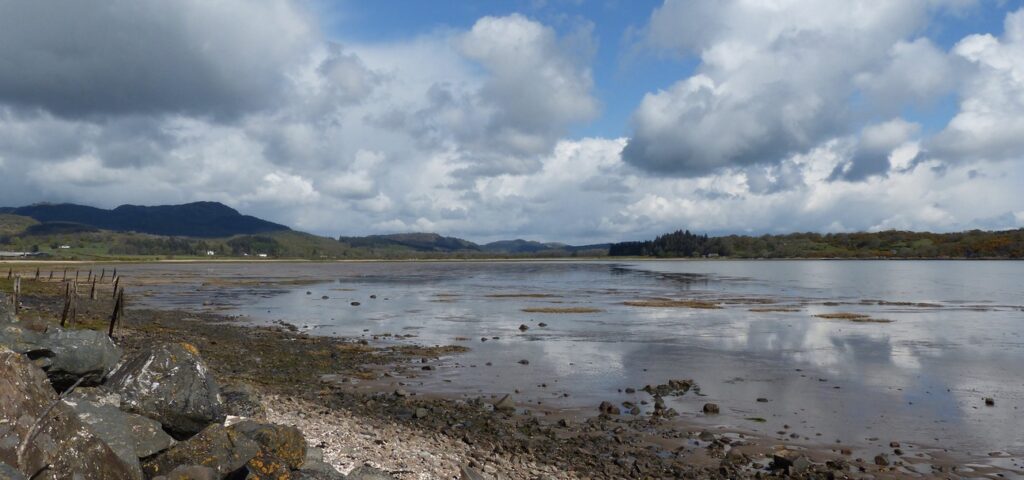
The natural resources of the Solway coastal lands, from the stone, iron ore and coal, to the fishing and rich farmland of the Solway coastal plains have over the centuries provided a way of life for the people living in this part of Scotland and England.
Other important influences on the lives of the coastal communities of Dumfries and Galloway, south west Scotland and Cumbria in north west England have been the accessibility and strategic value of the geographic location of the Solway. As a west coast location distant from the seats of power in Edinburgh and London, but close to Ireland and the Atlantic Ocean, the Solway area has historically experienced waves of migration of different groups of people. Romans, Vikings, Normans….. right through to World War 2 when people from many different countries arrived on the Solway shores in support of the nation's war effort. All have left their mark. The North American and Canadian transAtlantic connections also created emigration and trade opportunities which shaped the lifestyle and economic activities of the local Solway communities.
For as long as I can remember I have been intrigued by the influences that shape local cultural identities in different parts of the world. I delve into the history and stories of the Solway through my work as a local tour guide, researching how local people lived and the wider processes that shaped their lives. Not surprisingly I frequently find the answers to the questions I ask relate to the Solway location, landscape and waters. For centuries the sea and land have given communities life through fishing, or ship building, mining or farming and more....
There are many, often quite forgotten, coastal sites such as the remains of tiny jetties, small quaysides and under-used harbours dotted along both the English and Scottish Solway coastlines. These less well known localities stand as testament to the people who through the centuries have survived in this beautiful remote area. Each place telling it’s own unique story of the Solway people who have lived here. As a local tour guide part of my role is to interpret the clues hidden in the landscape and explain their significance
The following photographs offer a tiny glimpse of the rich layered Solway coastal history, and fascinating places and stories that visitors to the area can encounter on my Secret Solway tours and my Solwayconnections Scottish coast and waters tour.
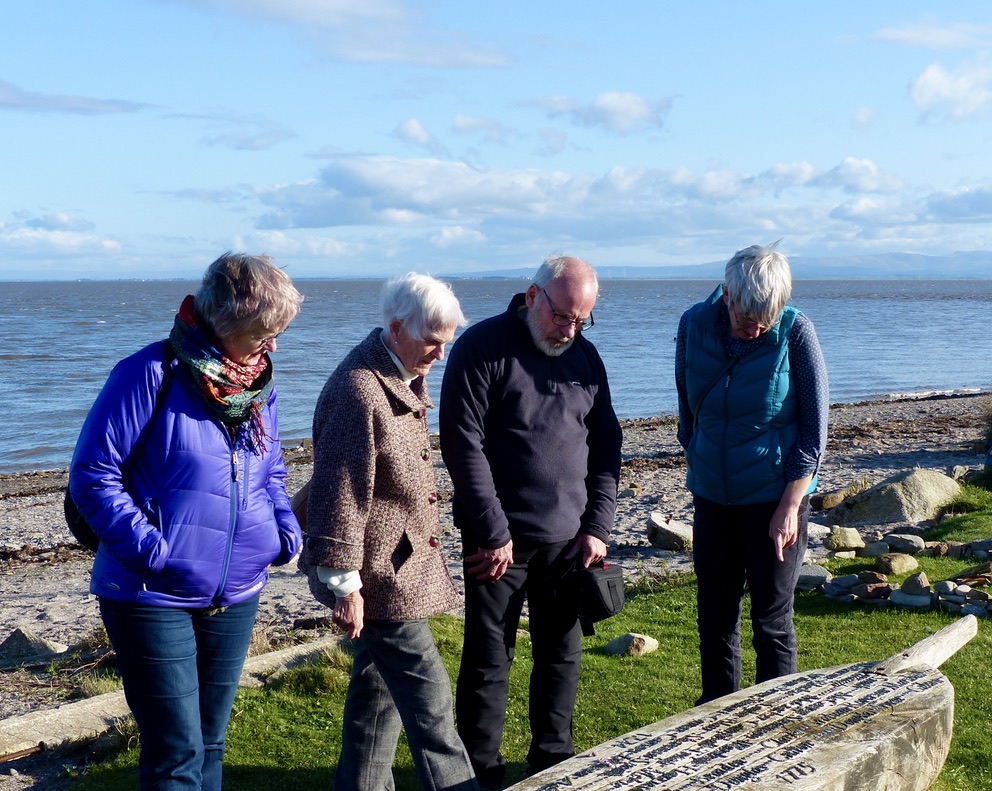
In Scotland in a tiny north Solway coastal community, founded in Viking times, near the mouth of the River Nith is a wooden sculpture covered in Scottish family names. A reminder of the people who in the 1700s at this site, took their last few steps on Scottish soil before boarding a fine sailing ship for their brave transAtlantic journey to a new life in Canada.
Boats of different sizes still cram into a now silted up siding on the River Urr off the Dumfries and Galloway Solway coast. These days a quiet sleepy village looks over the quayside. In the 1650s this tiny quayside was an export point for locally made mill stones. By the mid 1800s vessels up to 350 tons would moor here, importing and exporting goods and creating a place which was alive with the bustle and noise of people at work. Historically barrels of treacle were one of the imports that would arrive here and due to some leaking on to the dock a nick name in the past that was given to the people from this village was 'The Treacle Trampers'.
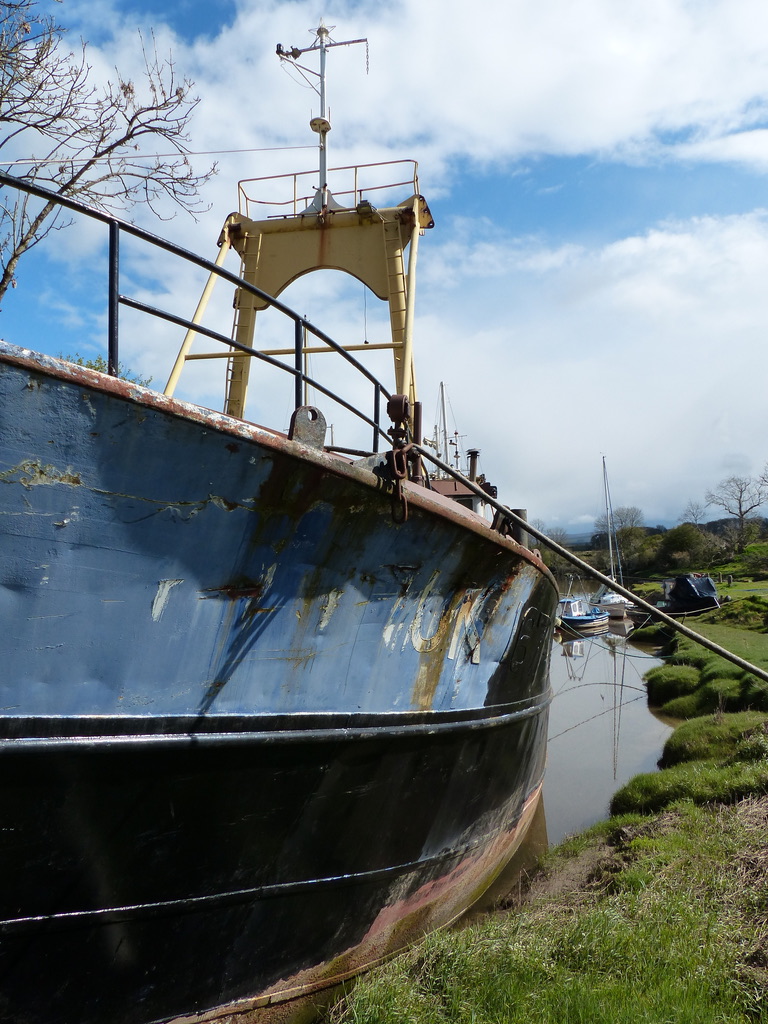
Great stones set by the wide river Nith in Dumfries and Galloway, Scotland – mooring points and reminders of the fine local and international sail and steam ships that once frequented the Solway waters. Shipbuilding and seamanship were a significant part of Solway economic history for centuries. Archeologists think dug out canoes were an early form of local Solway transport. The Romans are believed to have used small locally made boats to move goods around the Solway. The Vikings were a seafaring people who arrived on the Solway shores. The legacy of local boat and ship building history from the 1700s can still be seen today right around the Solway coast in both Cumbria, England and Dumfries and Galloway in Scotland. Solway built craft travelled the world and the crews on the locally built ships were famous for their seamanship. Crew lists from the early 1800s show a mixture of men from both the English and the Scottish sides of the Solway working together on different ships.
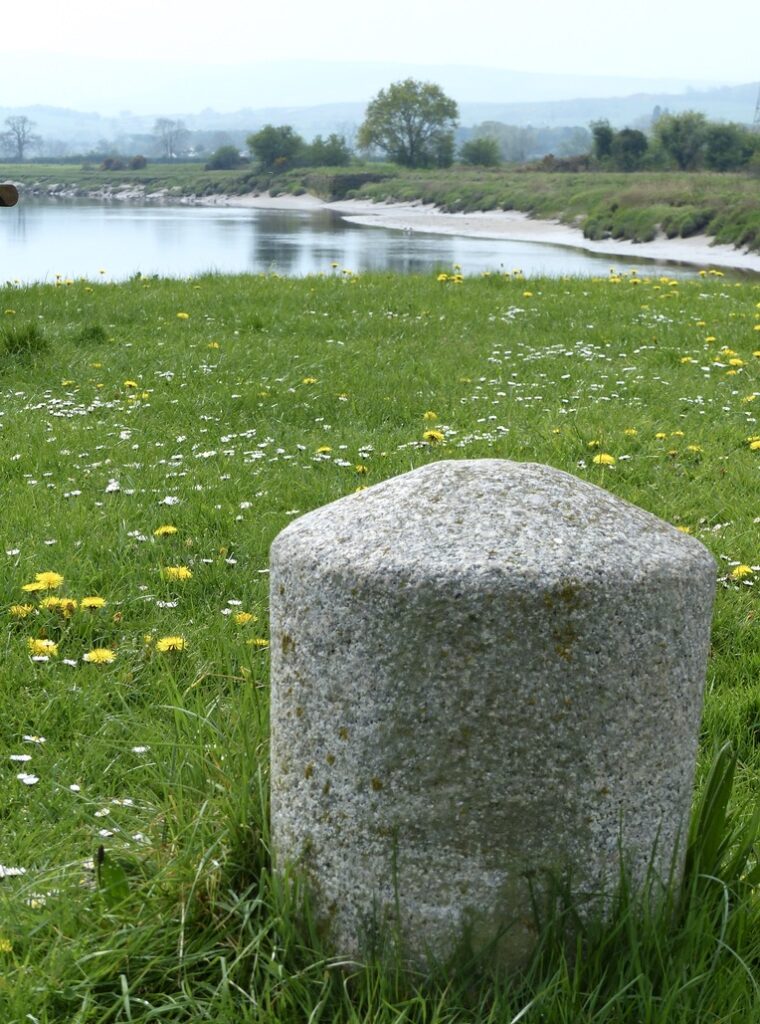
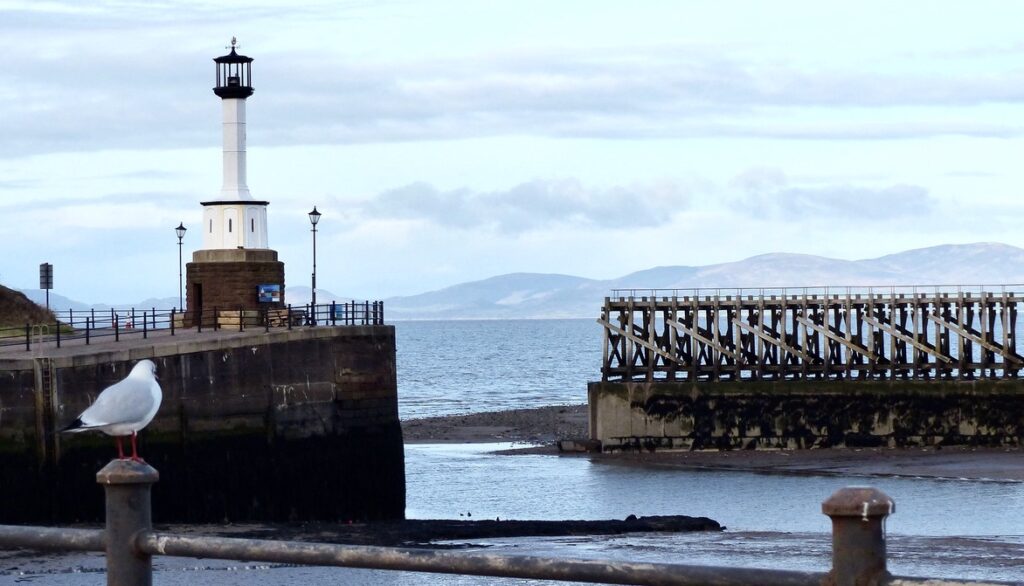 Still home to a small number of fishing boats, pretty Maryport harbour on the coast of north west Cumbria was one of the main shipbuilding centres on the English Solway coast. Different ship building yards produced many fine ships that travelled the world. Seafaring life or work attached to shipbuilding created prosperity for those that lived in Maryport in the boom years of the early 1800s and greatly improved life expectations and longevity. Some local Maryporters of the time lived past 100 years of age. Quite an achievement in that era. As well as also being the site of a Roman fort one of Maryport's many claims to fame is also a connection with the ill fated Titanic.
Still home to a small number of fishing boats, pretty Maryport harbour on the coast of north west Cumbria was one of the main shipbuilding centres on the English Solway coast. Different ship building yards produced many fine ships that travelled the world. Seafaring life or work attached to shipbuilding created prosperity for those that lived in Maryport in the boom years of the early 1800s and greatly improved life expectations and longevity. Some local Maryporters of the time lived past 100 years of age. Quite an achievement in that era. As well as also being the site of a Roman fort one of Maryport's many claims to fame is also a connection with the ill fated Titanic.
Silloth on Solway is another coastal town on the English Solway coast. It was developed on the arrival of the railway line for a dual purpose. The deep water harbour was designed to facilitate international trade and coastal connections for the city of Carlisle. Most of the township was built as a Victorian spa tourist destination. Nicknamed the 'Cumbrian Riviera' Silloth's early appeal was to rich upper class tourists and then after the wars it became a more popular destination for working families. The strategic importance of the location of Silloth meant that during world war 2 Silloth had an influx of transAtlantic visitors - fighter pilots, trainers, mechanics, air transport delivery auxiliaries (sometimes women pilots). The walk way along Silloth sea front still has fine views across the Solway waters to Scotland and for those World War 2 military personnel working in the town would have offered a place for relaxation and possibly even romance. Please contact me if you would like to book a guided walk of Silloth on Solway to find out more about the history of this interesting town.

To find out more about a Solwayconnections Guided Tour please email fiona@solwayconnections.co.uk or phone (uk code) 07494489901.
